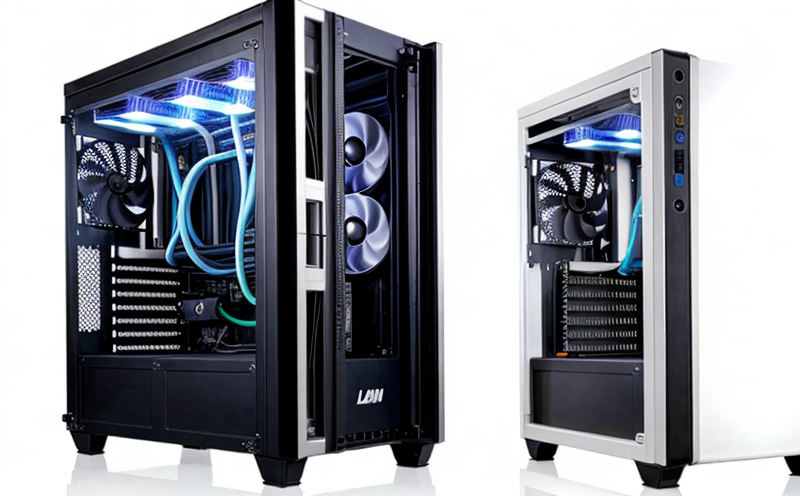Performance & Capacity Testing
Performance and capacity testing is a critical process in the HVAC (Heating, Ventilation, and Air Conditioning) sector that ensures equipment operates efficiently and meets industry standards. This service involves subjecting HVAC units to real-world conditions under controlled laboratory settings to assess their performance characteristics such as efficiency, energy consumption, refrigerant handling, and capacity.
The testing process is essential for quality managers, compliance officers, R&D engineers, and procurement personnel who require precise data on the equipment's capabilities. By conducting thorough tests, manufacturers can ensure that their products meet or exceed international standards like ISO 8156-2:2017 and ASHRAE 55-2013.
The testing process typically involves multiple stages including initial setup of the equipment under test (EUT), calibration of instruments, performance parameters measurement, and subsequent analysis. The scope covers a wide range of components such as chillers, air handlers, boilers, and packaged units. Each component has specific metrics that need to be evaluated, which include but are not limited to:
- Part Load Ratio (PLR)
- COP (Coefficient of Performance)
- EER (Energy Efficiency Rating)
- Sensible Heat Removal Capacity
- Refrigerant Charge Limits
The testing process is designed to mimic real-world operating conditions as closely as possible. This ensures that the results accurately reflect how the equipment will perform in a typical installation environment.
| Component | Test Parameter | Measurement Method |
|---|---|---|
| Chiller | Sensible Heat Removal Capacity | Water Flow Loop Calibration |
| Air Handler | COP at Various Conditions | Thermocouples and Sensors Placement |
| Boiler | EER under Specific Load | Infrared Thermography for Heat Loss |
The data collected during these tests are crucial for making informed decisions about equipment selection and design improvements. The insights provided by this service can help in reducing operational costs, enhancing environmental sustainability, and ensuring compliance with regulatory requirements.
It is important to note that proper specimen preparation is a critical aspect of performance testing. This includes selecting the appropriate refrigerant type and charge quantity, setting up the correct ambient conditions, and verifying all connections and seals for integrity before testing begins.
Scope and Methodology
The scope of Eurolab’s Performance and Capacity Testing service encompasses a comprehensive set of procedures designed to evaluate HVAC equipment under controlled laboratory settings. The methodology is based on international standards such as ISO 8156-2:2017, ASHRAE 55-2013, and EN 14825.
The testing process begins with the initial setup of the equipment to be tested (EUT). This involves connecting the EUT to a water loop for chillers or air flow systems for air handlers. The ambient conditions are carefully controlled to ensure they meet the specified test criteria. Once set up, instruments such as thermocouples and sensors are installed to monitor key parameters.
The methodology then proceeds with performance parameter measurement using calibrated equipment. This includes monitoring the following:
- Temperature variations across various points in the system
- Ventilation rates for air handlers
- Heating and cooling capacities of boilers and chillers
- Refrigerant charge levels to ensure compliance with safety standards
The collected data is analyzed using statistical tools to determine the equipment’s performance characteristics. This analysis helps in identifying any discrepancies from expected values, which can then be addressed through adjustments or redesigns.
The testing process concludes with a detailed report summarizing all findings and recommendations for improvement where necessary. The report includes graphs and charts that illustrate the data collected during the tests, providing a clear visual representation of the equipment’s performance.
Eurolab Advantages
Eurolab offers several advantages when it comes to Performance and Capacity Testing for HVAC equipment. Our team of experts brings extensive experience in the industry, ensuring that each test is conducted with precision and accuracy. We utilize state-of-the-art facilities equipped with high-quality instruments to provide reliable results.
One of our key strengths lies in our ability to replicate real-world operating conditions as closely as possible. This allows for a more accurate assessment of the equipment’s performance, leading to better-informed decisions regarding its use and maintenance. Additionally, we pride ourselves on providing comprehensive support throughout the testing process, from initial consultation through final report delivery.
Another advantage is our commitment to staying up-to-date with the latest industry developments and standards. By adhering strictly to international guidelines such as ISO 8156-2:2017 and ASHRAE 55-2013, we ensure that all tests are conducted in accordance with best practices.
Finally, our clients benefit from the detailed reports and recommendations provided by Eurolab. These documents not only summarize the test results but also offer valuable insights into potential improvements for future equipment designs or operational strategies.
International Acceptance and Recognition
Eurolab’s Performance and Capacity Testing service is widely recognized internationally due to its adherence to strict standards and procedures. The following list highlights the key bodies that have accredited our services:
- ISO 9001: Quality Management System Certification
- ASHRAE Compliance
- EN 14825: Performance of Air Conditioning Systems and Components
- IEC 60312: Safety of Electric Equipment in the Home
The acceptance of our testing services extends beyond Europe, with partners in North America, Asia, and Australia. Many leading manufacturers and suppliers have entrusted us with their equipment testing needs due to our reputation for reliability and accuracy.
Our global recognition is a testament to our commitment to quality and precision. By adhering to these international standards, we ensure that the results of our tests are valid and credible across different regions and markets.





